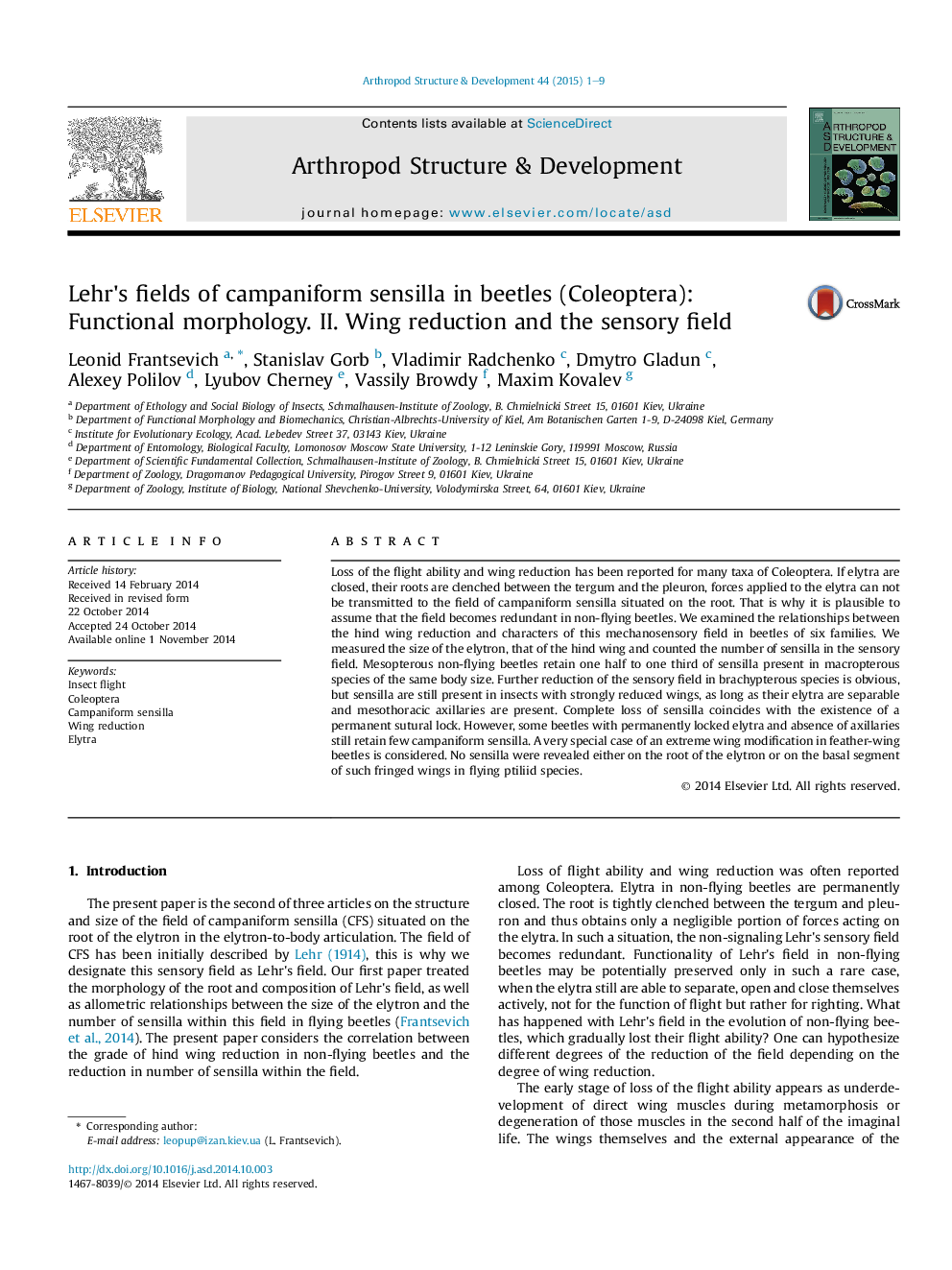| Article ID | Journal | Published Year | Pages | File Type |
|---|---|---|---|---|
| 2778522 | Arthropod Structure & Development | 2015 | 9 Pages |
•We studied the relationship between the hind wing reduction and characters of the sensory field on the elytron.•Decrease in number of campaniform sensilla studied in beetles of six families correlated with reduction of hind wings.•Regress of the elytral sensory field is behind of the hind wing reduction.•Complete loss of sensilla coincides with the existence of a permanent sutural lock. The inverse is not true.•The particular case of the wing modification in feather-wing beetles is considered.
Loss of the flight ability and wing reduction has been reported for many taxa of Coleoptera. If elytra are closed, their roots are clenched between the tergum and the pleuron, forces applied to the elytra can not be transmitted to the field of campaniform sensilla situated on the root. That is why it is plausible to assume that the field becomes redundant in non-flying beetles. We examined the relationships between the hind wing reduction and characters of this mechanosensory field in beetles of six families. We measured the size of the elytron, that of the hind wing and counted the number of sensilla in the sensory field. Mesopterous non-flying beetles retain one half to one third of sensilla present in macropterous species of the same body size. Further reduction of the sensory field in brachypterous species is obvious, but sensilla are still present in insects with strongly reduced wings, as long as their elytra are separable and mesothoracic axillaries are present. Complete loss of sensilla coincides with the existence of a permanent sutural lock. However, some beetles with permanently locked elytra and absence of axillaries still retain few campaniform sensilla. A very special case of an extreme wing modification in feather-wing beetles is considered. No sensilla were revealed either on the root of the elytron or on the basal segment of such fringed wings in flying ptiliid species.
Graphical abstractFigure optionsDownload full-size imageDownload as PowerPoint slide
